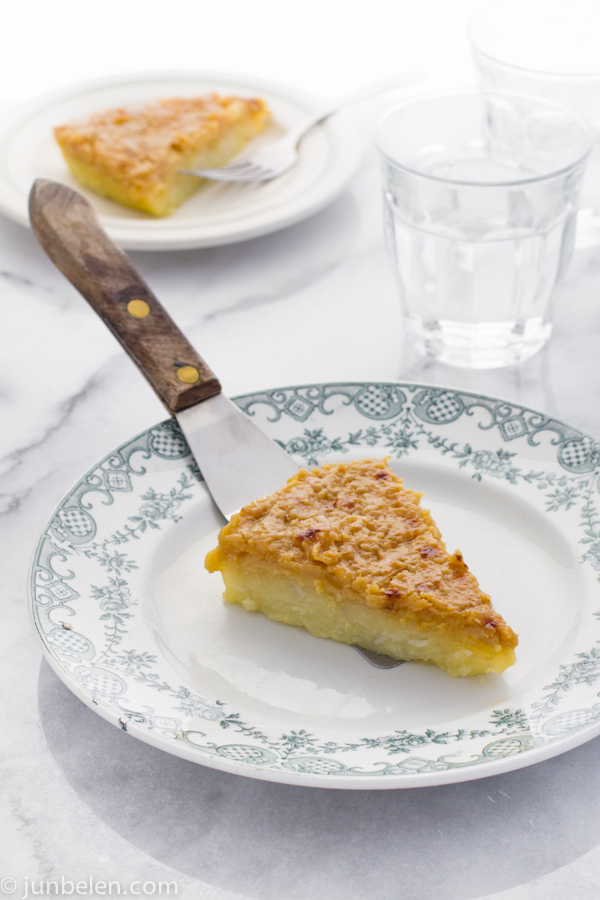There’s cake in the kitchen, cooling on a rack on the blue-tiled counter next to a pot of brewed Barako. Cassava with strips of sweet macapuno topped with caramelized coconut milk, baked in fragrant banana leaves.
There’s cake because we’re celebrating. That’s how things are around here, in case you haven’t noticed. Jun-blog is a finalist for Best Regional Cuisine Blog in Saveur’s Best Food Blog Awards. Two years in a row. I am honored by the recognition. Thankful beyond words. A nod to Jun-blog is a nod to Filipino cuisine. Thank you, Saveur.
And a big, big thank you to all of you — my dear friends — for following Jun-blog. Thank you for your unwavering support. It makes me happy that through my blog our paths have crossed and we have, in one way or another, connected through our love of Filipino food and culture. I was riffling through your notes and emails the other day and came across this one from a seventy-three year-old reader who writes,
“I was born in Ilocos but immigrated with my mother when I was one month old in ’39 (three months old by the time the big steamship got here to the States). My mother was a great cook but passed away in 2007. I’ve been trying to recreate some of her dishes and you can imagine my happy surprise to find out that your recipe for menudo is one that I make but I did not know what it was called. It is, indeed, a very comforting food and one of my favorites. I made it for dinner tonight.
… Now that both my parents are gone, it is heartening to keep one connection to my heritage through your blog. Thank you!”
I tear up every time I read notes like this. I’m sentimental. Sappy, I know. But that’s just me. Thank you to all of you for reading and sharing the blog with your family and friends, for trying out the recipes. Thank you, from the bottom of my heart.
The winners of Saveur’s Best Food Blog Awards are chosen by reader votes. You have to be a registered user to vote but signing up is quick and easy. Voting ends April 26th and winners are revealed May 3rd. Follow this link to register and vote.
Cassava Cake Recipe
Recipe adapted from Gerry Gelle’s Filipino Cuisine, makes 8 servings
For the cake
2 cups grated cassava
1 cup coconut milk
1 egg, beaten
1/3 cup sugar
2 tablespoons butter, melted, and more for brushing banana leaves
1/4 cup macapuno
For the topping
1 cup coconut milk
1 cup condensed milk
1/4 cup macapuno
1 tablespoon molasses (optional)
Preheat oven to 350 degrees F.
Combine cassava, coconut milk, egg, sugar, and macapuno in a bowl and mix well.
Line 8-inch baking pan with banana leaves and brush the leaves with butter. Foil can be used instead of leaves.
Pour batter into the pan. Bake until cake is cooked through and a toothpick inserted in the center comes out clean, about 35 to 40 minutes.
Meanwhile, mix coconut milk, condensed milk, macapuno, and molasses in a saucepan to make the topping. Cook over medium to low heat, stirring constantly until it thickens like jam, around 20 minutes.
Take the cake out of the oven. Turn the broiler to high. Reheat the caramel topping if it has hardened then pour and spread it evenly over the cake with a rubber spatula. Broil about 6 inches from the heating element, turning the pan halfway through, until browned and bubbly, around 5 minutes. Watch carefully as the top can easily burn. Serve warm or cold.
Cooking Notes:
1. I use fresh cassava or yuca when I make this cake. A pound of cassava yields roughly 2 cups when coarsely grated. Frozen grated cassava available in most Asian stores can be used instead of fresh cassava. Thaw frozen cassava completely then rinse and squeeze dry before using.
2. The caramel topping is the same topping I use to make biko. A cup of condensed milk is a little less than one 14-ounce can. I add molasses to deepen the color of the caramel topping.
